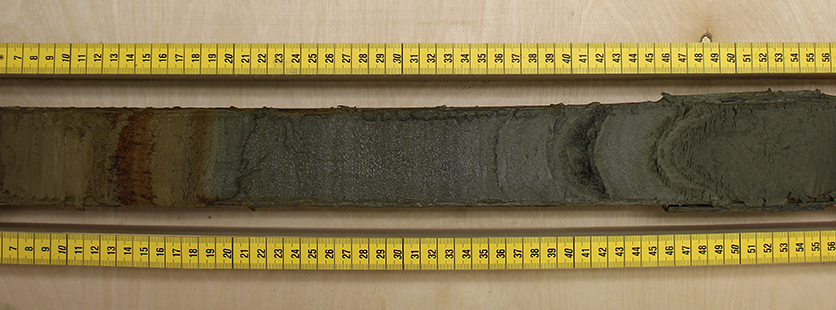
Paleoecology
Yarrow Axford uses biological remains preserved in lake sediments, peats, and soils to reconstruct Quaternary environmental changes, including recent climate change and anthropogenic landscape change. Much of Axford’s paleoecological work utilizes statistical transfer functions based upon modern calibration data to generate quantitative reconstructions of past temperatures and other environmental parameters based upon microfossils preserved in lake sediments -- a powerful method for estimating the rate and significance of past and ongoing changes. Insects, ostracodes and other aquatic invertebrates, pollen, charcoal, diatoms, plant macro-remains and molecular tracers (e.g., plant lipids) are examples of useful environmental indicators that are commonly preserved in lake sediments and other Quaternary deposits. Students and postdocs in the Axford lab have used these indicators to reconstruct changes in fire regimes, hydroclimate, polar and mid-latitude ecosystems and temperature.
An additional line of paleoecological inquiry examines the post-glacial colonization of glaciated landscapes and isolated high-latitude islands (e.g., Iceland in the North Atlantic and Adak Island in the North Pacific) by aquatic invertebrates. Such studies provide insights into how species cope with climate change.
Brad Sageman’s research over the years has included work focused on the paleobiologic causes and consequences of perturbations in biogeochemical cycles, and the use of fossils as recorders of change in biogeochemical cycles. A recent collaboration with paleobotanist Jenny McElwain at University College Dublin is expanding earlier work on the marine faunas of the Cenomanian-Turonian (C-T) interval in the Western Interior basin into coeval marginal marine sites in order to sample the terrestrial response to a major perturbation in the global carbon cycle. A graduate student co-advised by Sageman and McElwain, Rich Barclay, has recently completed a reconstruction of pCO2 across the C-T interval using the stomatal index method.
Rosemary Bush’s research focuses on building the tools for understanding the plant fossil record and reconstructing paleoecosystems using careful examinations of the drivers of those tools in living plants and their applications to fossil flora. Much of the structure and composition of ancient terrestrial ecosystems is not directly preserved in the fossil record, and to understand those aspects requires interpreting proxy records, which in turn must be grounded in a thorough understanding of modern plants and their environments. Bush’s expertise combines biology, paleontology, and geochemistry, and she applies the perspective of modern plant biology to questions of how ancient plants recorded the environments they inhabited and how we can interpret those records to understand the history of environmental change on Earth. Recent and ongoing work includes:
1) calibration studies on how cellular morphology and stable carbon isotopes record light exposure and shading of a plant leaf, a valuable tool in reconstructing the three-dimensional structure of fossil forests and their component species. This work uses plants on the Northwestern campus and at the Chicago Botanic Garden, and is suitable for undergraduate research projects.
2) paleoecosystem reconstructions using fossil plants and leaves—their morphology and stable isotope composition—from Ethiopia and Wyoming, and collaboration with colleagues working at other localities.
3) studies of stable isotopes (carbon, oxygen, hydrogen) of modern plants with applications to archaeology.
